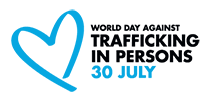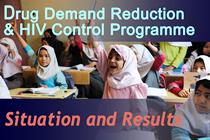Comprehensive strategies for crime prevention towards social and economic development
|
|
Crime is often considered a major impediment to economic growth and development because it tends to increase economic uncertainty, discourage long-term investment and new employment opportunities and erode the rule of law. At the same time, lack of economic growth in connection with high economic and social inequality tends to increase levels of crime and violence.
Socioeconomic conditions and social inequality play an important role influencing whether or not certain individuals engage in criminal behaviour. The 13th UN Crime Congress drew attention to the need to protect children and youth from social marginalization and exclusion and to reduce their risk of becoming victims or offenders.
The UN General Assembly has adopted resolutions expressing its conviction about the importance of preventing the involvement of children and youth in criminal activities by supporting their development and strengthening their resilience to antisocial and delinquent behaviour.
Links between crime and development
Low levels of crime and violence generally have a positive impact on socioeconomic development. However, the connections between economic development and crime and violence are not the same everywhere.
The UN Office on Drugs and Crime’s (UNODC) Global Study on Homicide 2019 explains that while high rates of homicide can have negative impact on economic growth, rising prosperity alone does not necessarily lead to lower levels of violence. If the benefits of economic growth are not evenly distributed there is a risk that some of those who miss out may decide to resort to violent and criminal activities.
Cost of crime
Costs resulting from crime and violence are high. A recent study by the Inter-American Development Bank of the crime situation in 17 countries in Latin America and the Caribbean concluded that the average costs of crime amounted to 3.55 per cent of gross domestic product in the region, compared to less than 1.4 per cent in Germany and 2.75 per cent in the United States. The social and economic costs of crime include the costs of victimization, in terms of lost quality of life and foregone income of the prison population, security services costs incurred by the private sector and public spending by governments on police, the judiciary and the prison system.
Preventing corruption
Corruption is a major obstacle to social and economic development and the upholding of human rights. It reduces the ability of governments to provide justice, health, education and other social services to citizens and undermines the rule of law. This in turn affects community trust and the ways in which citizens cooperate with the police and can facilitate their work. Strong anti-corruption strategies are needed to prevent corruption hampering social and economic development.
Impact on achieving the Sustainable Development Goals
Progress towards reducing violence and crime and ensuring equal access to justice for all remains uneven. Homicide is a reasonable proxy for violent crime and a robust indicator of levels of violence within States. The Secretary-General’s report on progress towards the Sustainable Development Goals shows that the global number of intentional homicides per 100,000 people increased from 6.0 to 6.1 between 2015 and 2017 and that various forms of violence against children persist. Rising income and wealth inequality will undermine efforts to achieve the Sustainable Development Goals, according to the report.
Crime Prevention
Well-planned crime prevention strategies not only prevent crime and victimization but also contribute to sustainable development. Out of 47 countries that presented at the High-level Political Forum on Sustainable Development in 2019, many reported on the crime situation within their borders and positive measures undertaken.
The 2030 Agenda for Sustainable Development envisions bringing benefits to all people, especially the most vulnerable and marginalized. Special attention must be paid to children and youth. A youthful population with low levels of education and high rates of unemployment in combination constitute risk factors pushing young people into delinquent and violent behaviour. At the same time, by virtue of their age, energy level and learning abilities, young people are key agents of change in creating a better future and have great potential to advocate on behalf of themselves and their communities.
Early prevention efforts supporting the healthy development of children and young people have been shown to be effective, as they address the conditions that give rise to antisocial behaviour and crime before they appear.
For example, UNODC runs a global youth crime prevention initiative under the Doha Programme that uses sport as tool for strengthening the resilience of at-risk youth including those in marginalized communities. The sport-based initiatives strengthen the social and individual skills of young people and provide them with information about the risks associated with crime, violence and drug use.
Urban crime prevention
Cities are hubs for innovation and economic productivity but often experience numerous crime and violence problems, including robbery, drug and human trafficking, sexual and gender-based violence, gang-related violence and organized crime, which tends to disproportionately affect the most disadvantaged urban communities.
UN Habitat’s New Urban Agenda calls for integrating inclusive measures for urban safety with the aim of developing inclusive, safe, resilient and sustainable cities.
UNODC has developed a new global programme on urban safety and good governance that aims to develop holistic, integrated strategies and interventions to reduce crime and violence in cities. It has supported cities in Latin America, Central Asia and Africa in recent years in conducting global safety audits that subsequently informed local safety and crime prevention action plans.
Women’s safety
While urbanization is often associated with greater access to education and employment opportunities and increased independence for women and girls, they continue to face sexual harassment and other forms of violence in urban public spaces, all around the world. Women rather than men most depend on public transport to get around, meaning violence against women and girls in transportation constitutes a major concern in many cities.
Policing and crime prevention
The police and other law enforcement institutions are often seen as key actors in crime prevention. Effective policing requires a gender-sensitive and human rights-based approach to law enforcement, built on consent rather than force. To strengthen legitimacy, law enforcement functions need to be carried out in a fair, effective and non-discriminatory manner, responsive to people’s and communities’ needs and acting with integrity and accountability.
Recent advances in technology have made a clear impact on policing in many countries and have the potential to increase police efficiency. However, there are some challenges including with respect to privacy and data protection. The use of technology should be in line with international human rights norms and standards.
Reducing crime and violence is important for achieving sustainable development. The 2030 Agenda for Sustainable Development includes numerous crime-and violence-related targets and Member States need to strengthen efforts towards social and economic inclusion with a view to preventing crime and violence.



